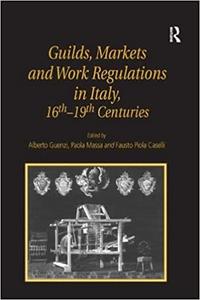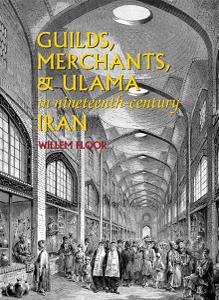
Alberto Guenzi, "Guilds, Markets and Work Regulations in Italy, 16th-19th Centuries"
English | ISBN: 1840142839 | | 528 pages | EPUB | 2 MB
The purpose of this volume is to provide a conspectus of current research on the history of guilds and corporations in Italy in the period from the Renaissance to the end of the 19th century. Particular aims are to examine the relationship between guilds, manufacturing, entrepreneurship, and economic development, and their impact on urban society and social welfare. The work derives from a major project set up in 1994; the results were discussed at a conference in Rome in September 1997, and formed the basis for a further presentation by Professor Carlo Poni at the 12th International Economic History Conference in Seville. The papers are grouped into three sections, dealing with the guild system in urban areas, case studies of individual guilds and conflicts, and their role in mutual aid and assistance. Specially translated for this volume, they trace for the English-speaking world a rich picture of the history of the Italian guild system in the modern era, and its movement from magnificence to decline.
Полная новость
- Книги
- 2-02-2023, 01:41
- 123
- 0
- voska89

Guilds, Merchants, & Ulama in Nineteenth-century Iran By Willem Floor
2009 | 292 Pages | ISBN: 1933823313 | PDF | 50 MB
Guilds, Merchants and Ulama analyzes the major functions and characteristics of these groups, and discusses how they each coped with the pressures of the world market to which Iran was increasingly exposed and which resulted in the disappearance of jobs reducing Iran s economic and political independence. After 1870, Iran s economic situation was aggravated by an influx of peasants into the main cities significantly increasing the size of permanent unskilled labor in these cities. Guilds only provided some measure of social and economic benefits and protection to its members but could not prevent major downsizing, which is detailed in a contemporary report included here in translation. Meanwhile, both the merchants and the ulama demanded government action to better protect the country s economy and its independence. To make a bigger fist, the ulama, merchants and reformists mobilized the guilds to support their political ends. As such, the guilds provided the force that powered the political events, which resulted in the Iranian Constitutional Revolution in 1906. The ulama s interference in economic life only made matters worse. They had no grasp of economics, beyond stating that people should not be greedy. And the guilds, despite their visible role during the 1905 06 events, found themselves used, and discarded when they were no longer needed. This created the parameters for major structural change to finally take place after 1925. In Guilds, Merchants, and Ulama Willem Floor provides a detailed analysis of primary source references essential for a better understanding of the socio-economic conditions that led to Iran's push toward modernization in the first quarter of the twentieth century.
Полная новость
